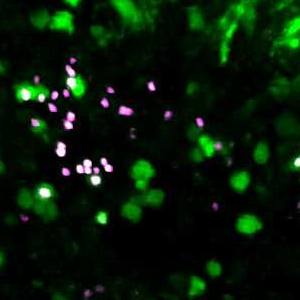Lymphedema is swelling that typically occurs in the extremities, often resulting from the damage or removal of a person’s lymph nodes during cancer treatment. It affects approximately 1 in every 1,000 Americans and is especially prevalent in patients with breast cancer. The swelling can cause discomfort and lead to infection.
Mayo Clinic surgeons in Arizona are leading the way with cutting-edge technology by using robotic surgery to offer a new procedure to treat lymphedema.
Journalists: Broadcast-quality video pkg (1:05) is in the downloads at the end of the post. Please Courtesy: "Mayo Clinic News Network." Read the script.
"One of the best areas to get lymph nodes for transplant or lymph nodes for transfer is actually from the omentum," says Dr. Alanna Rebecca, a Mayo Clinic plastic surgeon.
The omentum is a membrane of fatty tissue that lines your abdominal cavity. Traditionally, a lymph node transfer in that area required laparoscopic surgery, a large incision, and any risks and postoperative side effects that might come with it.
But a team of surgeons at Mayo Clinic in Arizona is now performing the next generation of this type of surgery — a first-of-its-kind procedure using what’s called a single-port robot.
"We are the only institution in the world that has ever done this procedure," says Dr. Rebecca.
"We make a 2.5- to 3-centimeter incision — just one incision — through which a single-port robot can then enter into the abdominal cavity and facilitate harvest of the omentum," says Dr. Chad Teven, a Mayo Clinic plastic surgeon.
This new, minimally invasive procedure allows surgeons to be more precise and improve patient outcomes while relieving their lymphedema symptoms.
"There are hundreds of thousands and potentially even millions of people who could benefit from these procedures," says Dr. Rebecca.
___________________________________________
For the safety of its patients, staff and visitors, Mayo Clinic has strict masking policies in place. Anyone shown without a mask was recorded prior to COVID-19 or recorded in an area not designated for patient care, where social distancing and other safety protocols were followed.







